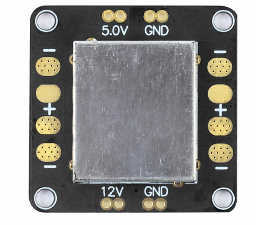Right-angle wiring is generally a situation that is required to be avoided as much as possible in PCB Layout wiring design, and it has almost become one of the standards for measuring the quality of wiring. So how much influence will the right-angle wiring have on signal transmission? In principle, right-angle routing will change the line width of the transmission line, causing discontinuity in impedance. In fact, not only right-angle routing, but also corners and acute-angle routing may cause impedance changes.
The influence of right-angle wiring on the signal is mainly reflected in three aspects: one is that the corner can be equivalent to a capacitive load on the transmission line, which slows down the rise time; the other is that impedance discontinuity will cause signal reflection; the third is that the right-angle tip is generated The parasitic capacitance caused by the right angle of the transmission line can be calculated by the following empirical formula: C=61W(Er)1/2/Z0 In the above formula, C refers to the equivalent capacitance of the corner (unit: pF), W refers to the width of the trace (unit: inch), εr refers to the dielectric constant of the medium, and Z0 is the characteristic impedance of the transmission line.

As the line width of the right-angle trace increases, the impedance there will decrease, so a certain signal reflection phenomenon will occur. We can calculate the equivalent impedance after the line width increases according to the impedance calculation formula mentioned in the transmission line chapter, and then Calculate the reflection coefficient according to the empirical formula: ρ=(Zs-Z0)/(Zs+Z0). Generally, the impedance change caused by the right-angle wiring is between 7%-20%, so the maximum reflection coefficient is about 0.1.
Many people have this understanding of right-angle wiring. They think that the tip is easy to transmit or receive electromagnetic waves and generate EMI. This has become one of the reasons why many people think that right-angle wiring cannot be routed. However, many actual test results show that right-angled traces will not produce obvious EMI than straight lines. Perhaps the current instrument performance and the test level restrict the accuracy of the test, but at least it illustrates a problem. The radiation of the right-angled wiring is already smaller than the measurement error of the instrument itself.
Generally speaking, the right-angle routing is not as terrible as imagined. At least in applications below GHz, any effects such as capacitance, reflection, EMI, etc. are hardly reflected in TDR testing. High-speed PCB design engineers should still focus on layout, power/ground design, and wiring design. Via holes and other aspects. Of course, although the impact of right-angle wiring is not very serious, it does not mean that we can all use right-angle wiring in the future. Attention to detail is the basic quality that every good engineer must have. Moreover, with the rapid development of digital circuits.The signal frequency processed by PCB engineers will continue to increase. In the RF design field above 10GHz, these small right angles may become the focus of high-speed problems.